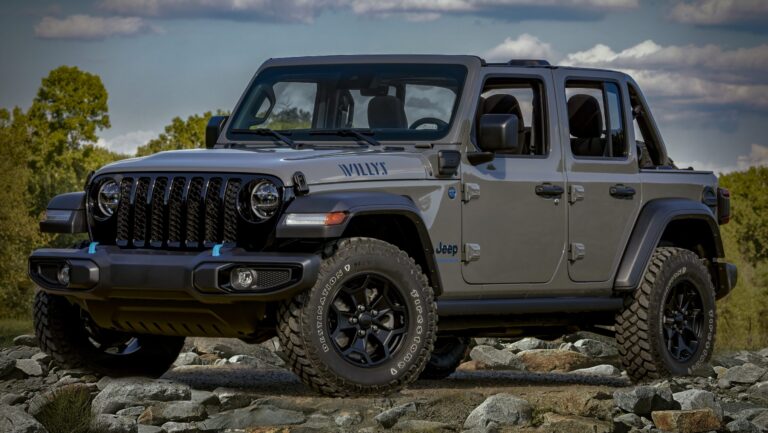1979 Jeep CJ5 For Sale: A Comprehensive Buyer’s Guide
1979 Jeep CJ5 For Sale: A Comprehensive Buyer’s Guide /jeeps.truckstrend.com
Introduction: Unearthing an Icon
The year 1979 holds a special place in the annals of automotive history, particularly for off-road enthusiasts and classic vehicle collectors. It marks a significant period for one of America’s most enduring and beloved vehicles: the Jeep CJ5. More than just a utilitarian machine, the 1979 Jeep CJ5 represents the culmination of decades of rugged evolution, embodying the spirit of adventure, simplicity, and unyielding capability. For those seeking an authentic connection to the open road—or, more accurately, the untamed trail—a 1979 Jeep CJ5 for sale isn’t merely a transaction; it’s an opportunity to own a piece of automotive legend.
1979 Jeep CJ5 For Sale: A Comprehensive Buyer’s Guide
This comprehensive guide delves into everything you need to know about acquiring a 1979 Jeep CJ5. We’ll explore its enduring legacy, key features, compelling reasons to buy one today, crucial considerations before purchase, and practical advice for navigating the market. Whether you’re a seasoned off-roader, a classic car aficionado, or simply someone captivated by the allure of a bygone era, understanding the nuances of the 1979 CJ5 is paramount to making an informed and satisfying investment.
The Enduring Legacy of the CJ5
The Civilian Jeep, or CJ, traces its lineage directly back to the military Willys MB of World War II. The CJ5, introduced in 1955, was a direct descendant, built on a slightly longer wheelbase than its predecessors but retaining the iconic short, stubby profile and open-air design. By 1979, the CJ5 had been in continuous production for 24 years, making it one of the longest-running automotive designs in history.
The 1979 model year falls within the "AMC era" of Jeep production, a period marked by more refined (though still rugged) powertrains and improved comfort compared to earlier models, while still preserving the CJ’s core identity. It was a time when the CJ5 was at the height of its popularity, celebrated for its compact size, maneuverability, and legendary off-road prowess. Its simplistic design meant fewer complex systems to fail, making it a favorite among those who valued reliability and ease of maintenance in challenging environments. The 1979 CJ5 represents the rugged individualism that defined an entire generation of outdoor enthusiasts and continues to resonate with collectors today.
Key Features and Specifications of the 1979 CJ5
To truly appreciate a 1979 Jeep CJ5, it’s essential to understand its foundational characteristics. While variations exist due to trim levels and previous modifications, here are the typical specifications:
- Engine Options: The primary engines offered were robust and dependable:

- AMC 258 cubic inch (4.2L) Inline-6: This was the most common and arguably the most desirable engine, known for its torque, reliability, and ease of maintenance. It’s often praised for its simplicity and ability to be rebuilt or modified.
- AMC 304 cubic inch (5.0L) V8: A less common but powerful option, the 304 V8 provided significantly more horsepower and a distinct exhaust note, making it a favorite for those seeking more street performance or a more effortless trail experience.
- Transmission: Most 1979 CJ5s came with either:
- T-150 3-speed manual: A robust and simple transmission.
- T-18 4-speed manual: A popular upgrade offering a "granny low" first gear, excellent for serious off-roading.
- TH400 3-speed automatic: Less common but available, offering easier driving in certain conditions.
- Transfer Case: The standard was the Dana 20, a strong, gear-driven transfer case known for its reliability and direct power transfer to the axles.
- Axles:
- Front: Dana 30
- Rear: AMC 20 (known for its two-piece axle shafts, which are sometimes upgraded to one-piece units by enthusiasts for added strength).
- Suspension: Leaf springs on all four corners, providing a robust but somewhat stiff ride, ideal for off-road articulation and carrying loads.
- Brakes: Typically front disc brakes and rear drum brakes.
- Wheelbase: A compact 83.5 inches, contributing to its exceptional maneuverability and short turning radius, perfect for tight trails.
- Interior: Spartan and functional, with basic gauges, a simple dash, and seating for two (or four with a rear bench). Comfort was secondary to utility.
- Exterior: Characterized by its open-top design, removable doors, fold-down windshield, and exposed fenders, ready for adventure.
Why Buy a 1979 Jeep CJ5 Today?
The appeal of the 1979 CJ5 extends far beyond mere transportation. It offers a unique ownership experience for several compelling reasons:
- Iconic Status & Nostalgia: Owning a 1979 CJ5 is owning a piece of American automotive history. It evokes a sense of nostalgia for a simpler time and carries an undeniable cool factor.
- Unmatched Off-Road Capability: Its short wheelbase, robust drivetrain, and simple suspension make it incredibly capable on challenging terrain. For true off-road enthusiasts, the CJ5 remains a benchmark.
- Simplicity & Maintainability: Compared to modern vehicles, the 1979 CJ5 is mechanically straightforward. Its systems are less complex, making it easier for owners to perform their own maintenance and repairs, and parts are generally readily available.
- Customization Potential: The CJ5 is a blank canvas for customization. From lift kits and larger tires to engine swaps and interior upgrades, the aftermarket support is vast, allowing owners to tailor their Jeep to their exact needs and tastes.
- Investment Potential: Well-maintained or professionally restored CJ5s can hold or even appreciate in value. They are increasingly sought after by collectors, making them a potentially sound investment.
- Community & Lifestyle: Owning a CJ5 connects you to a passionate community of Jeep enthusiasts. There are countless clubs, forums, and events dedicated to these vehicles, fostering a strong sense of camaraderie.
- Pure Driving Experience: Stripped of modern electronic nannies, a CJ5 offers a raw, engaging driving experience. You feel connected to the road (or trail) in a way modern vehicles simply can’t replicate.
Important Considerations Before Purchasing
While the allure of a 1979 CJ5 is strong, a wise buyer approaches the purchase with careful consideration. Here are crucial points to evaluate:
- Rust: The CJ5’s Arch-Nemesis: Due to their age and propensity for off-road use, rust is the single biggest enemy of a CJ5. Thoroughly inspect:
- Frame: Especially around spring hangers, crossmembers, and steering box mounts.
- Body Tub: Floorboards, rocker panels, rear corners, and under the seats.
- Fenders and Windshield Frame: Common areas for corrosion.
- Solution: Minor surface rust can be addressed, but significant frame or body tub rust can be costly to repair and compromise structural integrity. Be prepared for welding or panel replacement.
- Mechanical Condition:
- Engine: Check for leaks, unusual noises, smoke from the exhaust, and overall power. A compression test is highly recommended.
- Transmission & Transfer Case: Test all gears, listen for grinding, and check for leaks. Ensure 4WD engages smoothly.
- Axles: Look for leaks at the differential covers and axle seals.
- Brakes: Test pedal feel, stopping power, and look for leaks at lines and calipers/wheel cylinders.
- Steering: Check for excessive play in the steering wheel and inspect all steering components (tie rods, drag link, steering box).
- Suspension: Look for worn bushings, cracked leaf springs, or damaged shocks.
- Originality vs. Modifications:
- Original: A highly original, unmolested CJ5 in good condition will generally command a higher price and appeal to collectors.
- Modified: Many CJ5s have been modified for off-road performance (lifts, larger tires, engine swaps). While these can enhance capability, ensure modifications were done professionally and safely. Poorly executed mods can lead to serious issues.
- Title and Documentation: Verify the VIN on the title matches the vehicle. Ensure the title is clear and transferable. Any gaps in ownership or unclear titles should be a red flag.
- Pre-Purchase Inspection (PPI): If possible, have a trusted mechanic specializing in classic Jeeps or 4x4s perform a thorough inspection. This can uncover hidden issues and save you significant money down the road.
- Intended Use: Be realistic about how you plan to use the Jeep. A daily driver will need more attention to comfort and reliability than a weekend trail rig or a show vehicle.
Navigating the Market: Tips for Buyers
Finding the right 1979 CJ5 requires patience and diligence.
- Where to Look:
- Online Marketplaces: Bring-A-Trailer, eBay Motors, Craigslist, Facebook Marketplace.
- Classic Car Dealerships: Often higher prices but potentially better condition and vetted vehicles.
- Specialty Forums & Clubs: Jeep forums (e.g., CJ-8.com, Pirate4x4) often have classified sections with knowledgeable sellers.
- Auctions: Can yield good deals but require quick decision-making and often "as-is" sales.
- What to Ask the Seller:
- History of the vehicle: How long have they owned it? What was its primary use?
- Maintenance records: Any documentation of repairs or upgrades?
- Rust: What areas have been addressed? Any known rust issues?
- Mechanical issues: Any known leaks, noises, or operational quirks?
- Why are they selling?
- Set a Realistic Budget: Beyond the purchase price, factor in potential costs for:
- Immediate Repairs: Very few 40+ year old vehicles will be perfect.
- Restoration/Upgrades: If you plan to customize or bring it to show quality.
- Insurance: Classic vehicle insurance can be affordable but verify coverage.
- Fuel: CJ5s are not known for their fuel efficiency.
- Test Drive:
- Listen for unusual engine or drivetrain noises.
- Check for proper braking and steering response.
- Test 4WD engagement (high and low range).
- Note any vibrations or pulling.
- Pay attention to gauges and warning lights.
- Negotiation: Be prepared to negotiate based on the vehicle’s condition and any issues identified during inspection. Knowledge is power.
Common Challenges and Solutions
Owning a vintage vehicle like the 1979 CJ5 comes with its unique set of challenges, but most have straightforward solutions:
- Challenge: Parts Availability: While generally good, specific trim pieces or unique components might be harder to source.
- Solution: Leverage online parts suppliers (e.g., Quadratec, Morris 4×4 Center, Omix-ADA), salvage yards, and the vast Jeep community for used or rare parts.
- Challenge: Fuel Economy: Expect single-digit to low-double-digit MPG.
- Solution: It’s a characteristic, not a flaw. Drive less, enjoy the experience more, or consider modern engine swaps for significant cost and complexity.
- Challenge: Ride Comfort: The leaf spring suspension and short wheelbase can lead to a bumpy ride.
- Solution: Upgraded shocks, better seats, and a proper spring setup can improve comfort, but it will never ride like a luxury SUV.
- Challenge: Safety Features: Minimal by modern standards (no airbags, basic seatbelts).
- Solution: Drive defensively. Consider a roll cage for serious off-roading. Ensure seatbelts are in good condition.
- Challenge: Finding a Reputable Mechanic: Not all shops are familiar with older vehicles.
- Solution: Seek out independent shops specializing in classic cars, 4x4s, or off-road vehicles. Word-of-mouth recommendations are invaluable.
- Challenge: Previous Owner Modifications: Some modifications might be poorly executed or not to your liking.
- Solution: Budget for reverting or properly redoing any questionable mods. Always prioritize safety.
1979 Jeep CJ5 Estimated Price Guide
Please note that prices for classic vehicles like the 1979 Jeep CJ5 can fluctuate significantly based on geographical location, specific engine/transmission combination, originality, condition, and market demand. This table provides a general estimate.
| Condition Category | Price Range (USD) | Description / Notes






